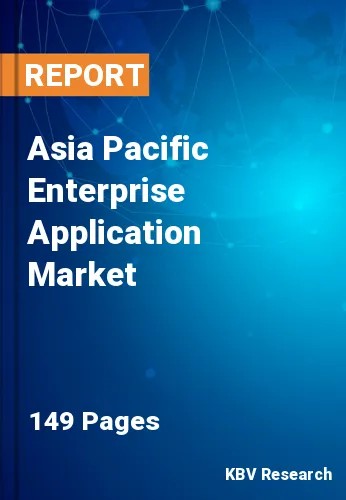The Asia Pacific Enterprise Application Market would witness market growth of 10.8% CAGR during the forecast period (2021-2027).
The market for enterprise applications is driven by factors like rising adoption of a customer-centric approach by organizations and competitive benefits over traditional business software. Additionally, growing usage of cloud-based mobile applications drives market growth globally. Moreover, owing to rapidly changing business models, geographic expansion of organizations would present a lucrative potential for enterprise application market quick growth.
Modern technology is advancing at a fast pace in the business world. Cloud computing, Big Data, the Internet of Things, and other technologies make it easier to share information and regulate data. Business companies are fast to adopt EAI since it aids in the integration of databases and workflows. Diverse workflow solutions, migration to cloud-based solutions, BYOD, and real-time application integration are all contributing to the market's positive growth.
National boundaries and markets are not the first places where supply chains exist. Many state institutions, particularly customs authorities, play an important role in the effectiveness and efficiency of an international supply chain. There's also a lot of reliance on specialized logistics service providers like freight forwarders and customs brokers, who may help clients move goods across borders or even construct logistics systems. The environment in which local and international supply chains operate is the most significant distinction.
Initially, the Asia-Pacific middle class population, which now exceeds 1 billion people, is expected to account for 66 percent of total world middle class by 2030. The ongoing prosperity of this new consumer class will put into question the long-held belief that consumption occurs in the West while production occurs in the East. As a result, China would continue to have a significant impact on how the supply chain is reformed as the region's largest economy.
The China market dominated the Asia Pacific Enterprise Application Market by Country 2020, and would continue to be a dominant market till 2027; thereby, achieving a market value of $40.9 billion by 2027. The Japan market is exhibiting a CAGR of 10.1% during (2021 - 2027). Additionally, The India market would showcase a CAGR of 11.5% during (2021 - 2027).
Based on Component, the market is segmented into Solution and Services. Based on Solution Type, the market is segmented into Supply Chain Management, Enterprise Resource Planning, Customer Relation Management, Business Process Management, Enterprise Asset Management, Business Intelligence, Content Management System, and Others. Based on Deployment Type, the market is segmented into On-premise, Cloud and Hybrid. Based on Organization Size, the market is segmented into Large Enterprises and Small & Medium-Sized Enterprises. Based on Vertical, the market is segmented into Telecom & IT, BFSI, Government, Retail, Manufacturing, Healthcare and Others. Based on countries, the market is segmented into China, Japan, India, South Korea, Singapore, Malaysia, and Rest of Asia Pacific.
Free Valuable Insights: The Worldwide Enterprise Application Market is Projected to reach USD 468.2 Billion by 2027, at a CAGR of 9%
The market research report covers the analysis of key stake holders of the market. Key companies profiled in the report include IBM Corporation, Oracle Corporation, Microsoft Corporation, SAP SE, Salesforce.com, Inc., Hewlett-Packard Enterprise Company, IFS AB, QAD, Inc. (Thoma Bravo), Epicor Software Corporation, and Infor, Inc. (Koch Industries).
By Component
By Solution Type
By Deployment Type
By Organization Size
By Vertical
By Country
Our team of dedicated experts can provide you with attractive expansion opportunities for your business.

